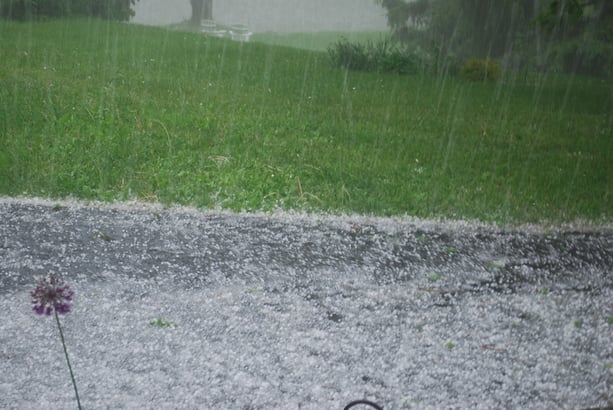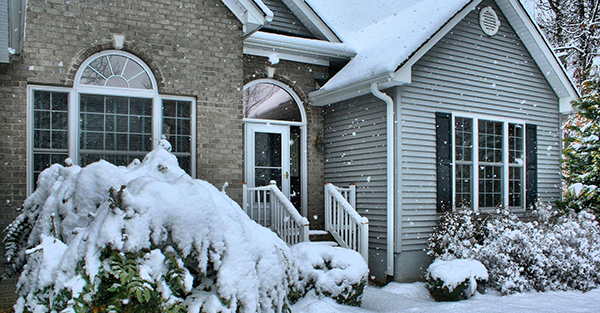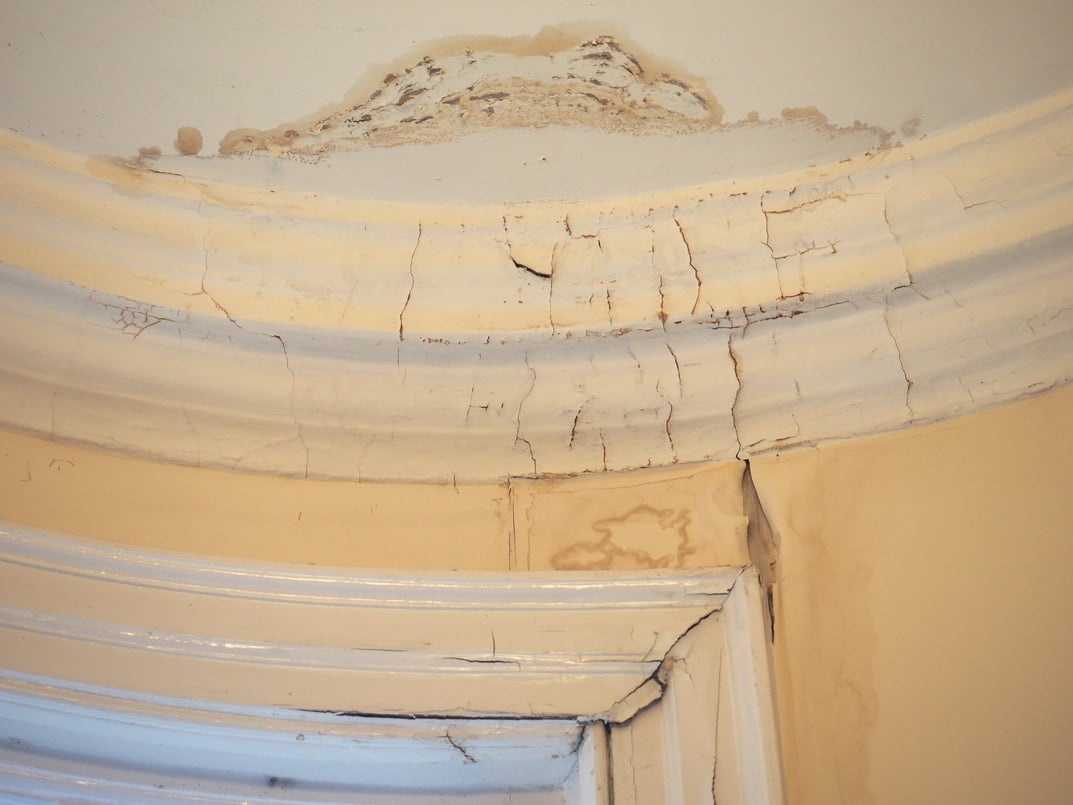
Spring thunderstorms can be awe-inspiring, beautiful, and incredibly destructive. High winds, pounding rain, and lightning can cause power outages, fires, and property damage. But it’s a more peculiar feature of spring storms in the heartland states that is responsible for a significant amount of damage to homes and vehicles: hail.
There were 5,411 major hail storms across the U.S. in 2015, mostly in the central states, including Iowa, which reported 350 hail events. Although the average hailstorm is only a few minutes long, the effects are staggeringly disproportionate. Nationwide, hail causes over $1 billion dollars in damage to property and crops each year, according to the National Oceanic and Atmospheric Administration (NOAA), which tracks and monitors weather data.
What is Hail?
Although hail seems like it has a lot in common with snow and freezing rain (“sleet” or “ice pellets”), it’s actually a completely different kind of precipitation. Hailstones are formed by moisture inside of cumulonimbus clouds, the heavy, puffy-looking towers of storm clouds. These cloud stacks can reach up to 50,000 feet into the atmosphere. Warm air from near the ground circulates quickly into the freezing upper regions, and moisture can solidify into ice crystals. As the ice balls fall back down, they thaw slightly and then refreeze; as they are repeatedly sucked back up in the churning cloud, they build up more frozen layers. Clouds with strong updrafts can produce larger hailstones, but eventually, they become too heavy to stay aloft, and they fall to earth. The largest recorded hailstone in the U.S. fell in South Dakota on in July 2010, measuring 8” in diameter and weighing 1 pound 15 ounces.
Hailstones do so much damage because they can be sharp and irregular and fall with incredible force. Dime-sized hail falls at approximately 43 mph, and golf ball-sized at about 66 mph; the largest hail can travel more than 100 miles per hour.
How Can You Tell If Your Roof Has Hail Damage?
Hailstorms are most common in April, May, June, and July. Combined with the season’s other weather events, by summer, many Iowa roofs look a little worse for wear. If you have wood shingles, you might notice cracking, denting, or splits. If you have asphalt roofing or composition shingles, you might notice divots, cracks, or areas that are soft to the touch like bruised fruit. You might also notice dents in the soft metals on your roof (including the flashing, vents, chimney, air conditioning units, and exhaust caps) and your gutters.
Even if you can’t see any damage to asphalt shingles, you may notice after a hailstorm that they are losing granules. This can be a result of the hail impact and can lead to big problems down the road: as the granules come off of the shingles, the roofing felt is exposed, and water can begin to infiltrate your roof. Moisture under the shingles and in the decking below can lead to water leaks as well as dangerous mold. Fixing these additional problems will add significant expense to your eventual roof replacement and can endanger your family’s health.
You should have your roof professionally inspected after the main hail season has passed or after a significant storm if you suspect damage. Many homeowners' insurance policies cover hail damage to some extent and could help you determine whether you should repair or replace your roof.
Repairing and Reducing Future Hail Damage
Some kinds of hail damage can be repaired, such as replacing cracked or dented shingles. Other kinds, like granule loss damage, can’t be fixed and eventually lead to a shortened lifespan for your roof. A professional inspection is the only way to determine whether what seems to be a small problem can be fixed or whether it’s time for you to think about roof replacement.
If you are replacing your roof and want to protect against future damage, make sure your roofing professional knows your priorities and helps you select shingles specifically rated to resist hail. Class 1 is the least hail-resistant, while Class 4 is the most resistant. Improving the quality of your roofing substrate will also help bolster your roof’s strength by reducing the ability of the shingles to flex under the impact, which will lessen the damage.
Your risk for hail damage depends largely on the characteristics of your home and neighborhood. If your home is relatively sheltered (by trees or neighboring buildings, for example), your risk will be less than if it is fully exposed. The slope and pitch of your roof will also make a difference in how much damage you sustain; a flat roof will be significantly more damaged by hail than a steep one.
If you’ve suffered hail damage this season, or if it’s just a good time for a routine inspection, Hedrick Construction can help you evaluate whether you should replace or repair your roof. Summer and fall are great times to schedule a roof replacement, which can help save you money and keep you warmer during the chilly winter. Contact us today to schedule your Ames-area roof inspection!








Comments